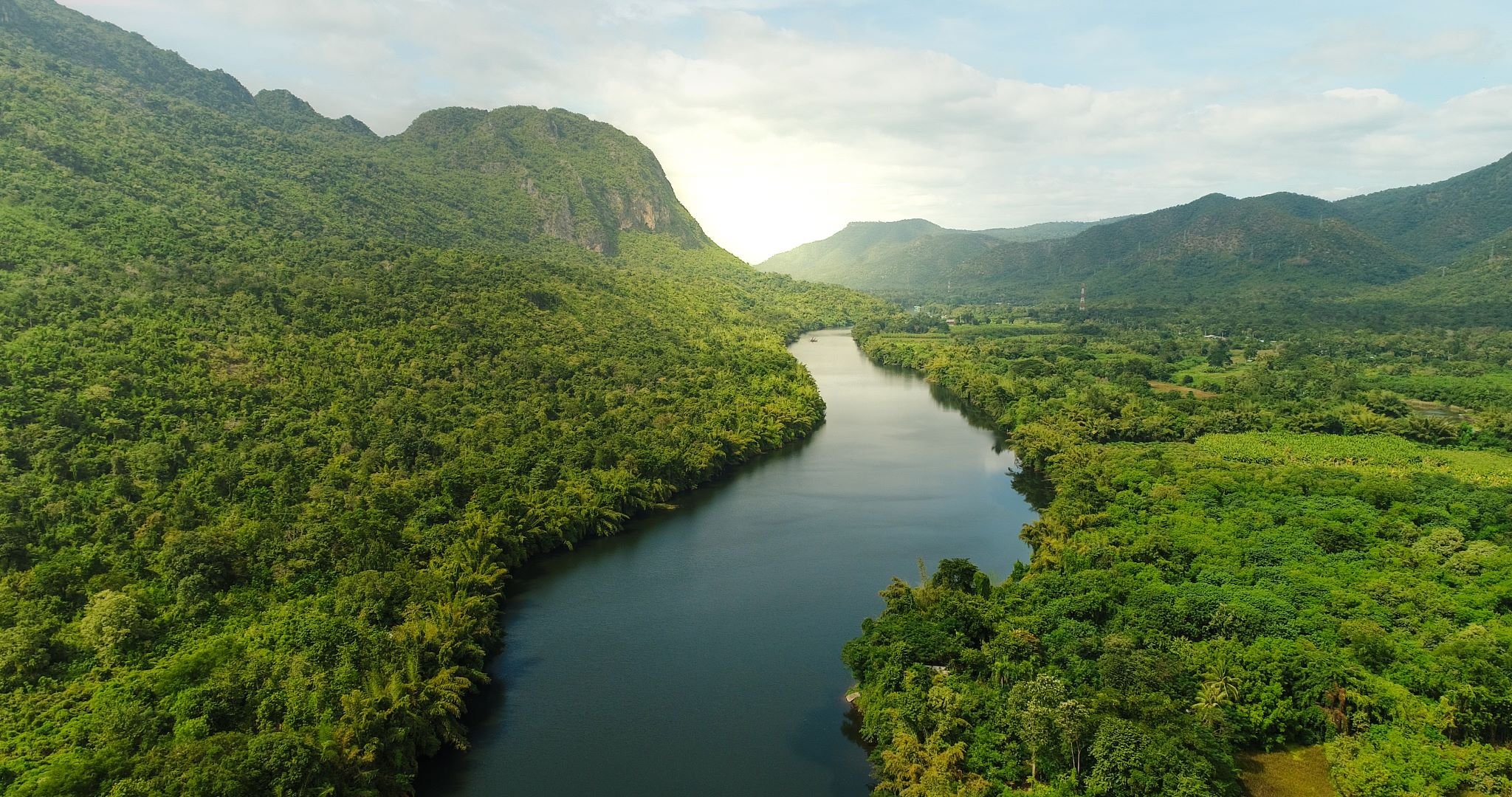Amid escalating climate and biodiversity crises, a new business paradigm is emerging: nature-positive business. This approach emphasizes not just minimizing environmental impact but actively restoring and protecting ecosystems.
With over 55% of global GDP—about $58 trillion—moderately or highly dependent on nature, this shift is as much a business imperative as it is an ethical one.
Understanding the Nature-Positive Concept
In their simplest form, nature-positive businesses actively contribute to the regeneration and enhancement of natural ecosystems, aiming for a net positive impact on nature.
This includes several fundamental building blocks including:
- Holistic approaches considering all realms of nature, including biodiversity, water, soil, land, and air/climate.
- Mitigation hierarchies focusing on avoiding and minimizing negative impacts before considering restoration or offsetting.
- Systemic change represents a transformative shift in business practices rather than simply reshaping existing ones.
- Collective action achieving nature-positive outcomes necessitates collaboration across sectors, value chains, and landscapes.
- Measurable impacts through the adoption of clear, science-based targets and demonstrate measurable progress.
The COP16 biodiversity summit in Cali, Colombia highlighted the need to translate global biodiversity targets into actionable business strategies, aligning with the Kunming-Montreal Global Biodiversity Framework (KM-GBF) targets.

Companies are increasingly recognizing the importance of nature-positive strategies to secure their reliance on natural resources. This approach aligns with nature-based solutions, which offer benefits across climate, biodiversity, and human well-being by managing ecosystems to address broader societal challenges.
How COP16 is Driving Nature Positivity
Global initiatives like COP16 have accelerated the adoption of nature-positive business models, emphasizing biodiversity impact monitoring and resource mobilization for nature restoration.
On the policy front, it’s implementing key targets from the Global Biodiversity Framework, pushing for mandatory nature impact reporting, and addressing harmful subsidies. A key outcome, Target 15, requires businesses to assess and disclose their biodiversity impacts and dependencies. This aligns with the United Nations’ framework for nature-based solutions, promoting collaborative ecosystem management that benefits biodiversity, climate, and societal resilience.
Business engagement is evident with over 230 companies advocating for nature-positive policies and 25 leading firms developing dedicated nature strategies. The conference is also promoting cross-sector collaboration and financial alignment, aiming to scale up green finance and address investment imbalances— a theme that is poised to remain front and center later in November at COP29.
To ensure accountability, COP16 is establishing monitoring mechanisms and encouraging science-based targets. Resources like Global Knowledge Service for Biodiversity (GKSSB), introduced at COP16, aims to support businesses and countries in tracking biodiversity targets more effectively.
The Economic Case for Nature-Positive Action
The economic potential of nature-positive business models is substantial. Estimates from the World Economic Forum suggest these models could unlock up to $10 trillion in annual business opportunities by 2030, mainly through cost savings and new revenue streams.
The buck doesn’t stop here. A nature-positive economy has the potential to create approximately 395 million jobs by 2030 through transforming food, infrastructure, and energy systems.
By embracing nature-based solutions, companies can cut operating costs, boost resource efficiency, and preserve vital ecosystem services such as pollination and water purification. With pollinator loss jeopardizing up to $577 billion in global crop production each year, safeguarding biodiversity is essential for maintaining resilient supply chains and ecosystem productivity.
Transforming Risks into Opportunities
As nature-related risks—physical, reputational, and regulatory—become material for businesses, companies are recognizing the commercial opportunities in addressing them.
For instance, S&P Global 1200 companies collectively used 22 million hectares for direct operations in 2021, generating $28.9 trillion in revenue. With approximately 85% of these companies heavily reliant on natural resources, proactive nature-positive strategies are becoming essential.
A shining example lies with Gold Standard who is piloting tools like the ‘Nature-based Solutions Labelling Requirements‘ to certify projects aligning with sustainable, stakeholder-inclusive ecosystem management principles. These guidelines help businesses transform potential risks into competitive advantages, from developing eco-friendly products to opening new markets.
Corporate Leadership in Biodiversity
Despite growing emphasis on sustainability, only 5% of Fortune Global 500 companies currently have biodiversity targets, compared to 83% with climate goals.
That being said, momentum continues to build. Over 400 companies have adopted the Taskforce on Nature-Related Financial Disclosures (TNFD) framework, which guides the assessment and disclosure of nature-related risks.
COP16 initiatives emphasized the need for biodiversity-focused standards and tools, such as the GKSSB, to help businesses track their biodiversity impacts in line with KM-GBF targets. Corporate leaders setting ambitious nature goals demonstrate that biodiversity targets are both achievable and beneficial, raising the bar for their industries.
Leveraging Technology for Nature-Positive Business
The rapid advancement of nature tech is facilitating nature-positive models by enabling precise biodiversity monitoring and ecosystem protection. Investment in nature tech reached $2 billion in 2022, growing at a 52% annual rate since 2018. Measurement, Reporting, and Verification (MRV) technologies, a category that has grown 763% from 2018 to 2022, are crucial for tracking and managing biodiversity impacts.
Key investment areas include:
- Precision Agriculture- using data analytics and sensors to optimize resource use and minimize environmental impact.
- Pollinator Technologies- developing solutions to protect vital species like bees, crucial for ecosystem health.
- Water Conservation- implementing smart systems to manage water resources efficiently and reduce ecological stress.
These technologies empower businesses to implement targeted, data-driven conservation strategies and align their operations with the global biodiversity goals set forth at COP16.
Aligning Nature and Climate Strategies
Nature-positive and climate strategies increasingly intersect, as natural climate solutions—like reforestation and wetland conservation—provide significant benefits for both biodiversity and climate mitigation.
These solutions, highlighted in Targets 8 and 11 of the KM-GBF, could provide up to one-third of the cost-effective emissions reductions needed by 2030—a crucial step in limiting global warming to 1.5°C.
Remarkably, healthy ecosystems already absorb over 50% of human-induced carbon emissions each year. By aligning biodiversity and climate strategies, businesses foster a virtuous cycle: ecosystem protection enhances climate resilience, which in turn strengthens both environmental and economic sustainability.
Embracing a Nature-Positive Future
Early adopters of nature-positive strategies are poised to gain a competitive edge. By engaging with initiatives like COP16, setting ambitious biodiversity targets, and investing in nature tech, companies are positioning themselves at the forefront of a sustainable business future. As businesses increasingly embrace nature-positive models, they unlock not only a pathway to ecological restoration but also new avenues for growth and innovation.
To implement a nature-positive business strategy, companies should follow these key steps:
- Assess and prioritize by evaluating impacts across all nature realms and identifying opportunities for positive change.
- Set ambitious commitments by establishing baselines, setting science-based targets, and developing a holistic strategy.
- Measure and act using validated indicators, applying the mitigation hierarchy, and thinking at a landscape level.
- Transform and collaborate by driving systemic change, engaging value chains, and fostering cross-sector partnerships.
- Integrate and mainstream nature considerations into decision-making and implement nature-based risk management.
- Disclose and report transparently and track progress towards nature-positive goals.
- Advocate and influence by supporting nature-positive policies and leading sector-wide transformation efforts.
By implementing these steps, businesses can begin to set a new standard where reversing nature loss begins to unlock new avenues for sustainable growth and innovation.
Featured Image: Credit: Business for Nature








